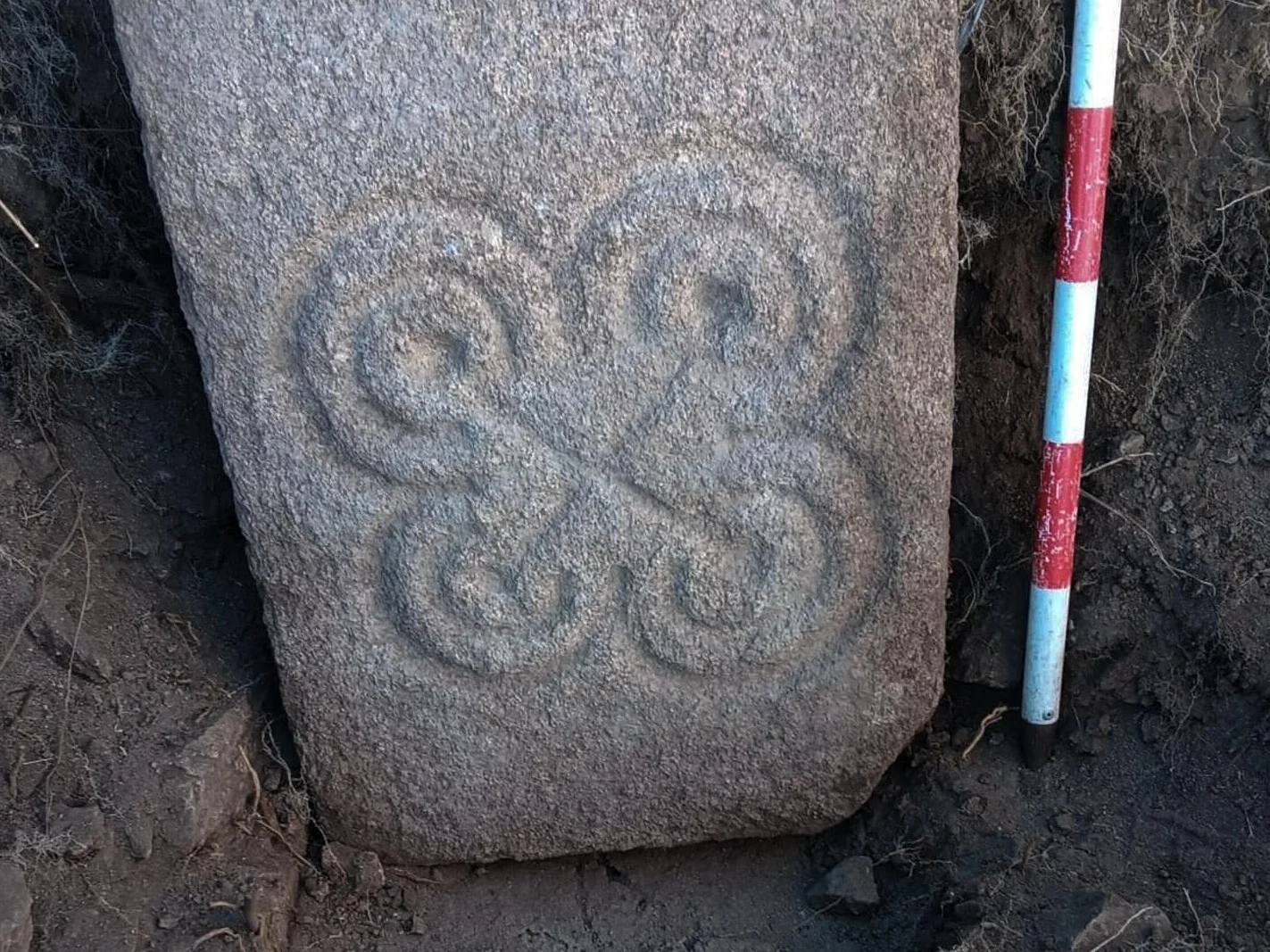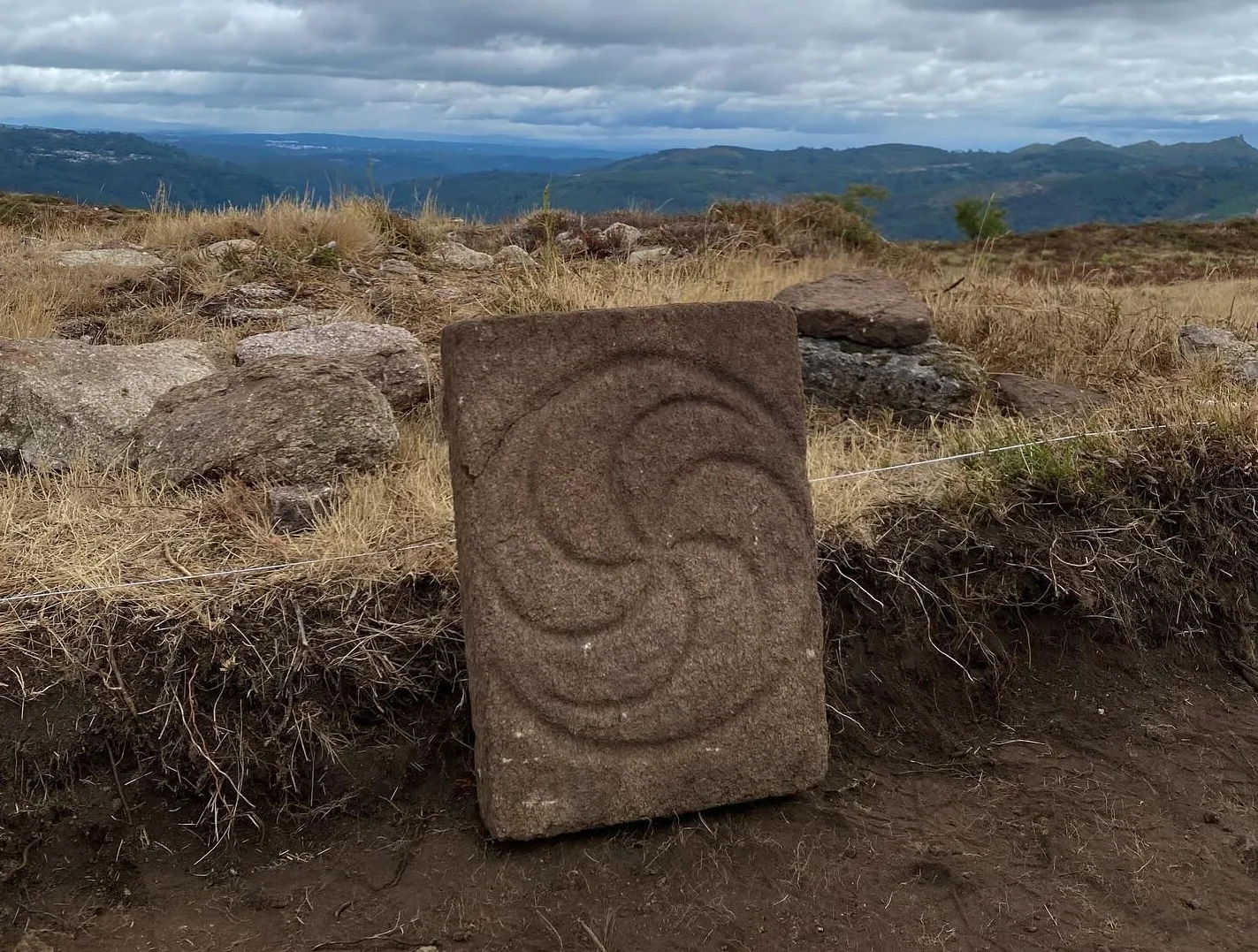Excavations at the Castro de San Vicenzo hillfort have unearthed symbols carved by the Castro Culture, providing new insights into the region’s ancient inhabitants.
The Castro Culture emerged during the early first millennium BC in the northwestern regions of the Iberian Peninsula.
One of the defining features of this culture are the fortified oppida and hillforts, commonly referred to as “castros”. Starting from the 2nd century BC, some of the hillforts evolved into semi-urban fortified towns, comparable in size to many Roman cities of that period.
A team of archaeologists, working in partnership with the Vive Avión Cultural Association, have recently been investigating the Castro de San Vicenzo archaeological site, a hillfort located near Avión in the Province of Ourense, Spain.

In a press release issued by Vive Avión, archaeologists excavated a total area of 140 square metres where they uncovered a rectangular stone block (Block 1) featuring a triskelion inscribed within a circle.
These types of symbols are characterised by patterns radiating from a central point and date from around the 4th and 3rd centuries BC.
The team also discovered a second block (Block 2) with a petrograph in the shape of a “rosa camuna”. This symbol has been found at sites such as Citânia de Briteiros, a hillfort in the municipality of Guimarães in Portugal, and the Monte das Ferraduras rockface in Cerdedo, Spain.
According to the archaeologists: “This finding not only enhances our understanding of the Iron Age in the region but also underscores the rich historical and cultural heritage still waiting to be uncovered in the northwest of the Iberian Peninsula.”
Header Image Credit : Vive Avión Cultural Association
Sources : Vive Avión





